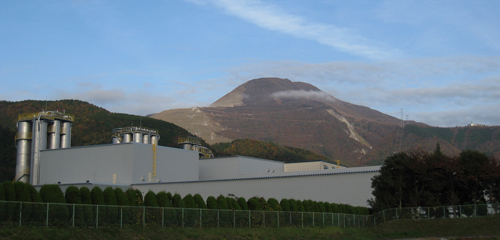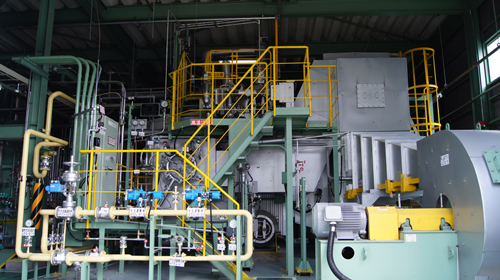Inquiries Concerning News
Corporate Communications Div.,
The Mitsubishi Chemical Group
TEL: +81-3-6748-7140
Mitsubishi Plastics switches from heavy oil/kerosene to city gas for the boiler and furnace at the main production base:aiming to reduce CO2 emissions by approx. 10,000 tons/year
Mar. 27, 2012
Mitsubishi Plastics, Inc. (head office: Chuo-ku, Tokyo; President Hiroshi Yoshida) has switched from heavy oil to city gas for the boiler of the Santo Plant (Maibara city, Shiga prefecture), one of its main production bases. The Company also plans to switch from kerosene to city gas for the furnace of the same plant by December 2012, the facility with an exhaust gas treatment unit used for combustion of volatile organic compounds (VOCs). As a result of these changes, the Santo Plant will reduce its CO2 emissions by approximately 10,000 tons/year compared with the 2010 level. The total investment cost is estimated to be about 400 million yen.
In order to reduce the environmental burden in its business activities, Mitsubishi Plastics has been proactively working to reduce CO2 emissions from its production facilities and promote resource-saving and zero emission. In so doing, the Company set the goal of reducing CO2 emissions from its domestic business activities by 40,000 tons/year※1 by fiscal 2015. To achieve this, it has introduced new energy resources as well as a highly-efficient ventilation system to save energy and increase productivity.
As part of such efforts, Mitsubishi Plastics has determined to change the use of fuel resources at the Santo Plant that produces optical polyester films used for flat-panel displays: heavy oil is replaced with city gas for the boiler that generates steam (which is used as a heat source of production lines); while kerosene is replaced with city gas for the furnace that burns and removes VOCs (which are generated from organic solvents used in the film coating process). City gas has a lower CO2 emission coefficient based on net calorific value than the burning of heavy oil and kerosene; therefore, the use of city gas as fuel for production facilities can contribute to reducing CO2 emissions. The remodeling work on the boiler has already been completed this month, and another remodeling for the furnace will be complete by December 2012. This will, as a result, cut CO2 emissions by approximately 10,000 tons/year in total; a reduction of approximately 8,000 tons/year for the boiler plus a reduction of approximately 2,000 tons/year for the furnace.
Mitsubishi Plastics will receive the subsidy for the above remodeling costs from Japan’s Voluntary Emissions Trading Scheme (JVETS) led by the Ministry of the Environment, in which the Company has participated.
While making active efforts to reduce the geoenvironmental burden in its business activities, Mitsubishi Plastics strives to realize the vision of “KAITEKI※2”advocated by the Mitsubishi Chemical Holdings Group through the development and distribution of innovative eco-friendly products.
※1 A CO2 emission reduction target calculated based on the BAU scenario (i.e., business-as-usual emissions without taking measures for a CO2 emission reduction target).
※2 KAITEKI: A challenge to attain the state of sustainability, materializing comfort for people, comfort for society and comfort for the Earth.
[Photos]
<Santo Plant>

<Recently updated boiler>

Inquiries by media regarding this material should be directed to the
Public Relations Section, General Administration Dept., Mitsubishi Plastics Inc.
TEL: +81-3-3279-3800
